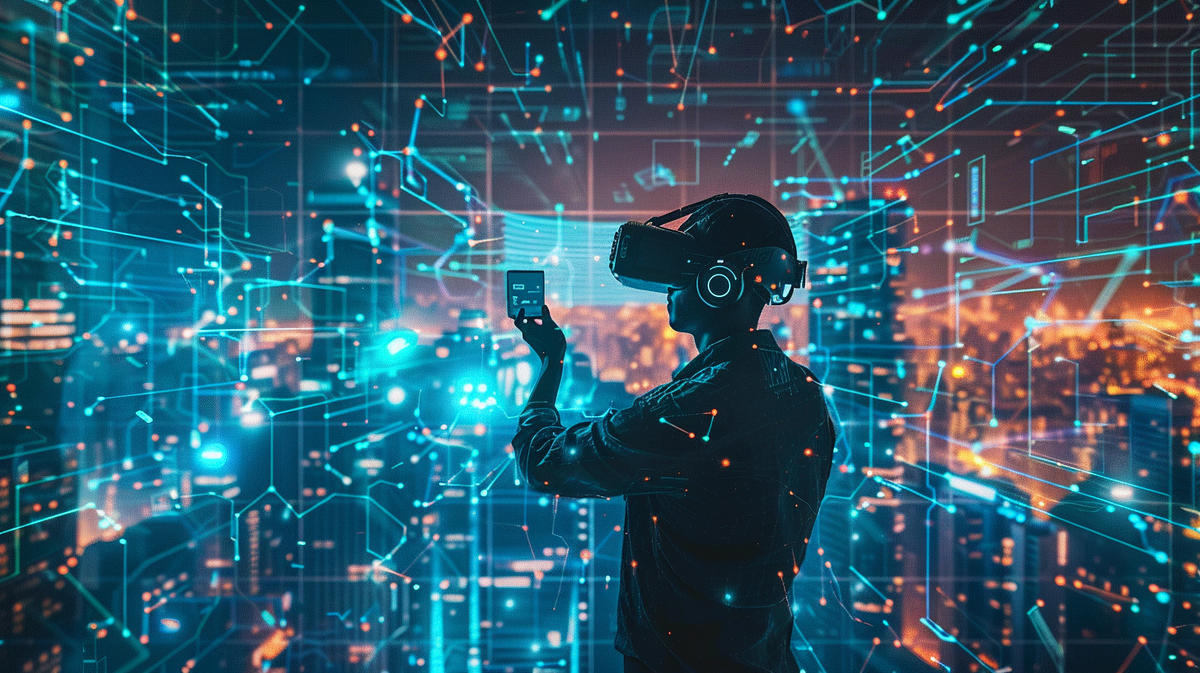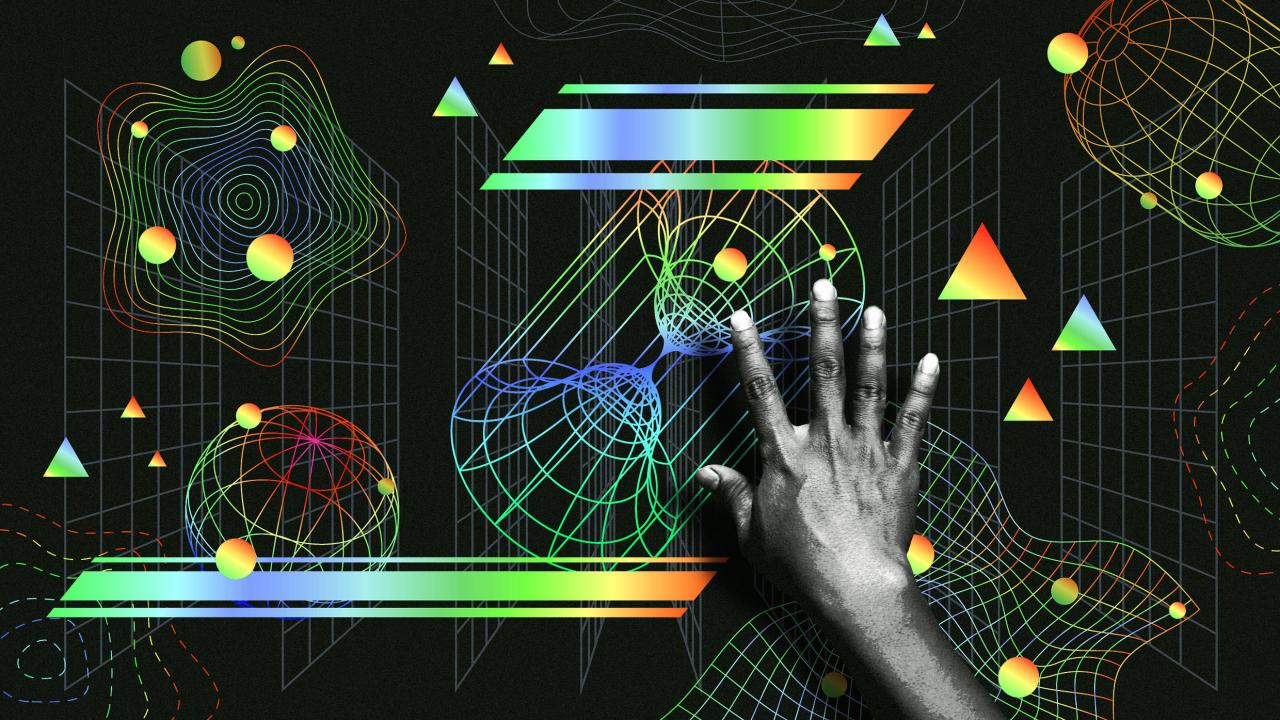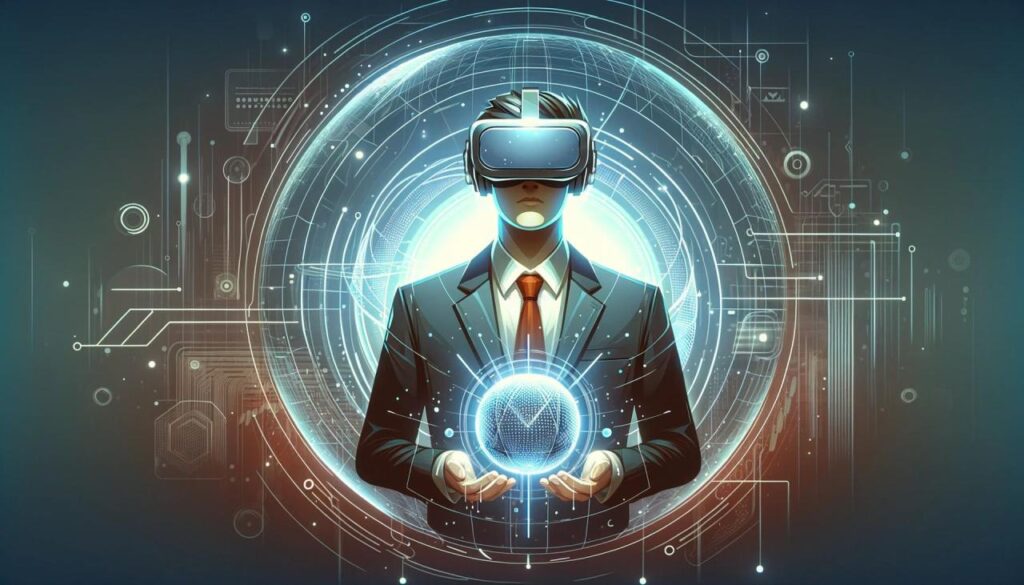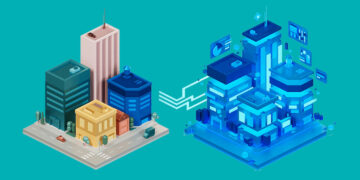The Dawn of Spatial Computing
As the world becomes increasingly digitized, our interaction with machines and data continues to evolve. Traditional interfaces such as keyboards, touchscreens, and mice have served us well—but a paradigm shift is underway. Enter spatial computing, a revolutionary technological frontier that merges the digital and physical worlds, enabling humans to interact with data, devices, and environments in ways once limited to science fiction.
Spatial computing is not a single technology; rather, it is a convergence of augmented reality (AR), virtual reality (VR), mixed reality (MR), artificial intelligence (AI), Internet of Things (IoT), and computer vision. These technologies combine to create a digitally enhanced 3D environment where digital objects can exist alongside—or within—the physical world.
This article explores how spatial computing is redefining human interaction, transforming industries, and paving the way for a more immersive, intuitive digital future.
What Is Spatial Computing?
At its core, spatial computing involves machines understanding and interacting with the space around us. It allows digital content to exist in 3D space and respond to the user’s movements, gestures, gaze, and voice commands. Instead of flat screens and static interfaces, users experience information and applications embedded in their physical surroundings.
The term gained traction thanks to Simon Greenwold’s 2003 MIT thesis, where he described spatial computing as “the human interaction with a machine in which the machine retains and manipulates referents to real objects and spaces.”
To simplify, spatial computing enables:
-
Machines to perceive and interpret the world spatially.
-
Humans to interact naturally with digital content as if it existed physically.
-
A seamless blend of physical and virtual interactions.
Core Technologies Powering Spatial Computing
The power of spatial computing stems from the combination of several key technologies, each contributing to a more immersive and intelligent user experience:
A. Augmented Reality (AR)
AR overlays digital elements—such as images, animations, and data—onto the real-world environment using smartphones, smart glasses, or headsets. Think of Pokémon Go or Google Lens as early examples.
B. Virtual Reality (VR)
VR immerses users in a completely digital environment, usually via a headset. It blocks out the physical world to transport users to simulated spaces—perfect for gaming, training, or therapy.
C. Mixed Reality (MR)
MR is the fusion of real and virtual worlds, allowing digital objects to interact with the real world in real time. Microsoft’s HoloLens is a leading MR device enabling users to place, manipulate, and interact with holograms.
D. Artificial Intelligence (AI)
AI plays a vital role in spatial computing by enabling context-aware interactions, natural language processing, facial recognition, and behavioral predictions—enhancing the system’s responsiveness.
E. Computer Vision
Computer vision enables machines to see and understand their surroundings through cameras and sensors, helping them recognize objects, track motion, and map spaces accurately.
F. IoT and Edge Computing
Spatial computing often relies on real-time data from IoT devices embedded in smart environments. Edge computing allows data to be processed locally for low latency interactions.
How Spatial Computing Changes Human-Computer Interaction
Spatial computing marks a dramatic departure from traditional human-computer interaction (HCI) by allowing more natural, intuitive, and immersive interfaces. Here’s how:
A. Gesture-Based Interaction
Users can control digital objects using hand gestures, eliminating the need for physical controllers.
B. Voice and Eye Tracking
Voice assistants and gaze tracking allow hands-free navigation and context-aware commands, enhancing accessibility.
C. 3D Spatial UI
Users interact with holograms, floating windows, and digital dashboards anchored in real-world coordinates, enhancing the feeling of presence and control.
D. Environmental Awareness
Devices respond based on real-world geometry, surfaces, and objects—understanding their location, scale, and proximity to users.
E. Multi-Device Ecosystems
Spatial computing supports seamless transitions across smartphones, wearables, AR glasses, and smart environments, creating a continuous interaction flow.
Real-World Applications Across Industries

The adoption of spatial computing is already transforming various industries by introducing more efficient, immersive, and intelligent workflows:
A. Healthcare
-
Surgeons can visualize 3D anatomical models during operations.
-
Therapists use VR to treat phobias, PTSD, and pain.
-
Remote diagnostics and training use spatial simulations for high-fidelity learning.
B. Education and Training
-
Interactive learning experiences make complex concepts more tangible.
-
Medical students practice procedures in virtual cadaver labs.
-
Industrial workers receive hands-on training in simulated environments.
C. Architecture and Construction
-
Architects create virtual walkthroughs of buildings before they are built.
-
Engineers use digital twins to monitor infrastructure in real time.
-
Construction sites are mapped and managed via spatial analytics.
D. Retail and E-Commerce
-
AR apps allow consumers to try on clothes, makeup, or furniture virtually.
-
Virtual stores offer immersive shopping from home.
-
Spatial data helps optimize store layouts and customer flow.
E. Entertainment and Gaming
-
VR and AR games provide deeply immersive worlds.
-
Virtual concerts and metaverse platforms redefine social entertainment.
-
Mixed reality experiences combine live performances with digital enhancements.
F. Manufacturing and Robotics
-
Spatial computing enables robot coordination and automation in factories.
-
Digital overlays assist technicians with real-time assembly instructions.
-
Predictive maintenance is improved using spatial sensors and AI.
G. Military and Defense
-
VR simulations are used for combat training and mission rehearsals.
-
Real-time battlefield visualization enhances strategic decision-making.
H. Urban Planning and Smart Cities
-
Planners use 3D spatial data for designing sustainable cities.
-
Traffic, air quality, and public services are monitored in real-time.
The Rise of Spatial Computing Devices

Several companies are racing to develop hardware that powers spatial computing, including:
A. Apple Vision Pro
Apple’s high-end mixed reality headset promises an immersive spatial OS, enabling apps to float in real space.
B. Microsoft HoloLens
Used widely in enterprise and defense, HoloLens supports high-fidelity MR experiences for collaboration, design, and field service.
C. Meta Quest Series
Previously known as Oculus, Meta’s headsets focus on social VR, gaming, and workspaces in the metaverse.
D. Magic Leap
This MR headset targets enterprise applications with industrial and medical AR solutions.
E. Snap Spectacles and AR Glasses
Companies like Snap and Google are working on lightweight AR glasses for daily use, bringing spatial computing into mainstream wearables.
Benefits of Spatial Computing
Spatial computing introduces numerous advantages that are reshaping the digital landscape:
A. Enhanced User Engagement
Spatial content is more immersive and interactive, keeping users engaged longer.
B. Real-Time Contextual Intelligence
Machines can respond based on environmental cues, improving responsiveness and personalization.
C. Natural User Interfaces
Gesture, gaze, and voice-based controls offer intuitive interaction without learning curves.
D. Cost and Risk Reduction
Simulations and digital twins reduce the need for physical prototypes or risky training scenarios.
E. Greater Accessibility
Voice and gesture commands support hands-free interaction for people with disabilities.
F. Spatial Awareness in AI
Integrating space-awareness into AI models leads to better decision-making and automation.
Challenges in Spatial Computing Adoption
Despite its promise, spatial computing also faces obstacles:
A. High Cost of Devices
Headsets and spatial sensors remain expensive for mass adoption.
B. Limited Content Ecosystem
There’s a lack of high-quality spatial apps, especially for consumer use.
C. Privacy and Ethics Concerns
Continuous environment scanning raises data privacy issues.
D. Technical Complexity
Developing spatial apps requires specialized 3D modeling, hardware, and frameworks.
E. Physical Discomfort
Some users report motion sickness, eye strain, or fatigue when using AR/VR for long periods.
The Future of Spatial Computing
The spatial computing revolution is just beginning, and its full potential will unfold in the coming years:
A. Lighter, Smarter Wearables
Advancements in optics and batteries will lead to sleek, AR-enabled glasses replacing smartphones.
B. Spatial Internet
Web 3.0 may evolve into a spatial web, with 3D interfaces replacing flat pages.
C. AI-Powered Spaces
Homes, offices, and cities will become spatially intelligent, adapting to users in real time.
D. Brain-Computer Interfaces (BCIs)
BCIs could one day connect minds directly to digital spaces, taking interaction beyond the physical realm.
E. Mainstream Education and Retail
Spatial computing will become as common as mobile apps, reshaping classrooms and shopping malls alike.
Conclusion: A New Reality Awaits
Spatial computing is redefining the boundaries between the digital and physical worlds. It brings data to life, makes machines more human-centric, and empowers users to interact with technology in three-dimensional, natural, and intuitive ways.
From revolutionizing industries like healthcare, retail, and manufacturing to enabling immersive digital experiences, spatial computing is not just a futuristic vision—it’s happening now. As technology advances and devices become more accessible, we’re on the verge of a new era of interaction that feels as real as the world around us.
The future isn’t just digital. It’s spatial.







